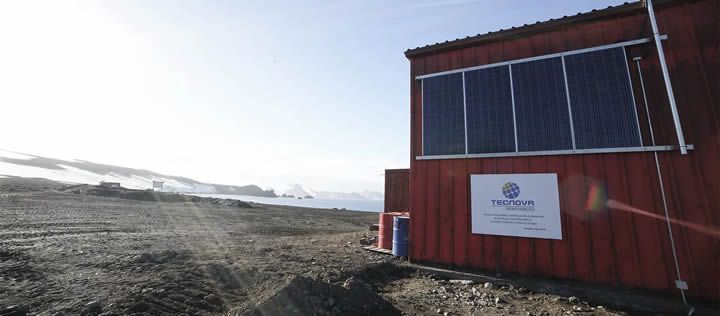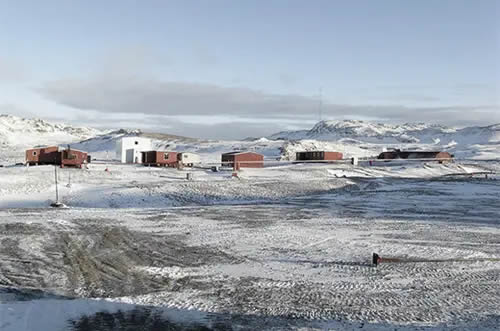Temperatures below -89 °C, winds over 200 km/h, extreme variances in hours of sunlight, with up to 16 hours in the summer and only two during winter, pose tremendous challenges for both research teams and equipment.
 Against great odds: Solar power in the Antarctic
Against great odds: Solar power in the Antarctic

Case Study from | Stäubli Electrical Connectors, Inc.
Many countries have installed research bases in the Antarctic to conduct various studies in this very special landscape and its unique climate. Temperatures below -89 °C, winds over 200 km/h, extreme variances in hours of sunlight, with up to 16 hours in the summer and only two during winter, pose tremendous challenges for both research teams and equipment. PV connectors from Stäubli are part of a demanding new field of application: installing solar power in the Antarctic.
Promoting the expansion of renewables
The Uruguayan government is a strong advocate for the integration of renewables and following a ten-year program to reduce its dependency on fossil fuels. 97% of the electricity now comes from hydroelectric, solar, wind and biomass. The country has been maintaining a research base in the Antarctic for over 30 years. The Artigas base, opened in 1984, is home to ten research scientists and 15 crew members in summer.
The base was traditionally powered by diesel generators. Besides the environmental impact, the logistics involved made the use of fossil fuels an inefficient and costly solution for generating energy.
The government selected Technova Renovables, a Tecnogroup subsidiary, to review the potential and lead on the integration of renewables at the Artigas Base. Tecnogroup is a conglomerate of Uruguayan companies with extensive international experience in the development, procurement, construction, operation and maintenance of renewable energy plants. The project included the delivery and installation of a pioneering solar system designed to withstand the environmental challenges within this delicate ecosystem.
The importance and challenging nature of this project required collaboration between several partners, including the government and the energy ministry MIEM, the local utility company, UTE, and the Instituto Antártico Uruguayo.

The challenge
The Antarctic is one of the most inhospitable places in the world. Spanning 14,000 square kilometers and with extreme climatic conditions including temperatures as low as -89.2 °C and winds more than 200 km/h, the challenge was to develop, install and test the performance of PV technology in such a fragile environment. Due to the variances in sunlight hours, the timeframe was very limited: the installation had to be completed before the seasons changed.
The solution
To successfully implement the pilot plant with 1.2kW, all partners worked closely together. Both the extreme temperatures and variances in hours of sunlight had to be considered for the installation of the PV system: The solar panels were vertically mounted onto the wall of an existing machine room, with a 90° tilt and N orientation and at a considerable height to overcome heavy snow accumulation as well as wind present at the site.
The success of the project is based on thorough planning, mutual harmonization and the careful selection of components to be installed. To secure constant and dependable energy feed-in, Tecnogroup relies on PV connectors from Stäubli. The MC4-Evo 2 connectors have been proving their worth from the very beginning and withstand the extreme, unprecedented climatic conditions.
Due to a long and fruitful business relationship and trust in Stäubli components that are already in use in several other systems, including large-scale PV plants, the choice was clear for Marcelo Mula, Executive Director of Tecnogroup.
“Knowing that you are working with experts in their field is crucial for the successful implementation of PV projects. We have been working with Stäubli for many years and rely on high-quality connectors that ensure a safe and reliable connection as well as steady energy feed-in.”
Marcelo Mula, Executive Director of Tecnogroup
The effective implementation of a PV system will not only help the Artigas Base to reduce the environmental impact and its operations cost, but also represents a further milestone in the global expansion of renewable energies.
The content & opinions in this article are the author’s and do not necessarily represent the views of AltEnergyMag
Comments (0)
This post does not have any comments. Be the first to leave a comment below.
Featured Product

